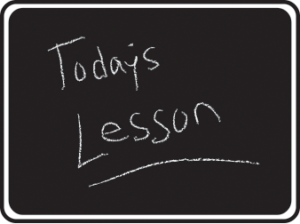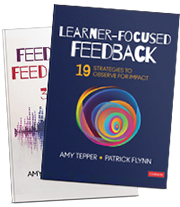A post by Amy Tepper and Patrick Flynn
Many of us have been wowed watching the Jeff Foxworthy show with 5th graders, but recently, we were wowed as we watched 6th graders set the bar for instructional leaders everywhere as we visited classrooms in one of our CT middle schools.
What We Know
According to Hattie (and the work that gets us up everyday), high quality feedback that promotes growth should always ensure a learner recognizes the following:
Where am I going? How am I going? And What’s next?
To accomplish this, feedback should:
- Be built from clear expectations and rubric language
- Provide clear examples as evidence
- Include questions to promote reflection
- Communicate strengths vs. praise and areas of growth vs. criticisms
Enter 6th graders.
What We Saw
We had the chance to observe a debate. We know one of the greatest challenges in this lesson structure is to keep the observers engaged. For this lesson, the 6th grade class watched 8 students debate while crafting feedback for their peers through the tech tool “Today’s Meet,” a safe way to run a Twitter-like live feed during a lesson.  We thought students might struggle to listen and process the strength of the arguments, follow the feed, respond to peers, and maintain critical and formative feedback based on the debating rubric. But, were we proven wrong…these are 12-year olds living in 2018 after all. In addition, they work with teachers who set high expectations, recognize the value of unpacking rubrics, explicitly teach students what quality feedback is and how to deliver it, and provide platforms for them to convey their findings. Consider some of the feedback that was provided for the peers debating:
We thought students might struggle to listen and process the strength of the arguments, follow the feed, respond to peers, and maintain critical and formative feedback based on the debating rubric. But, were we proven wrong…these are 12-year olds living in 2018 after all. In addition, they work with teachers who set high expectations, recognize the value of unpacking rubrics, explicitly teach students what quality feedback is and how to deliver it, and provide platforms for them to convey their findings. Consider some of the feedback that was provided for the peers debating:
Feedback on the quality of presentation
“Pro side sounds prepared and states points in clear ways”
“I like how pro side has said transitional phrases”
“S was clear and loud, but not enthusiastic”
“C knows his cards and is using good eye contact”
“Words like ‘um’ and ‘like’ should be avoided”
“T is the only one talking during the rebuttals.”
Oh, and just in case you thought they weren’t listening…
Feedback on the quality of the argument
“Forgetting your lunch or gym clothes isn’t much of an ‘emergency’” [cell phone pro side]
“I like how he used a website and a good fact for rebuttal.”
“C and P have a good idea that students can use their phones in school with educational apps to help them learn.”
“I think S should stick to facts and not hypotheticals.”
“Con keeps reusing the same facts.”
“What do germs have to do with having phones…everything has germs.” [cell phone con side]
Our favorite: “Is ilovetoknow.com a reliable source?”
Later, we went down the hall to a 7th grade Socratic discussion where the outer circle of students was providing feedback through the app Padlet. This allowed for a slower pace than the live feed, but again we saw high quality feedback about the quality of the arguments appear on the main screen. Peers recognized the strength of the evidence used, how speakers were building from each other’s responses, and the appropriateness of the evidence cited.
 What the Lesson Is For Instructional Leaders?
What the Lesson Is For Instructional Leaders?
These two classroom examples align with our standards of the high quality feedback leaders should be providing for teachers:
Standard A: A claim about practice and supporting evidence aligns to rubric language
Standard B: Specific evidence is provided to support growth
Standard D: Areas of strength and growth are rooted in the evidence and rubric
Standard F: The feedback can serve as a learning tool
Imagine the conversation and new learning that occured after the debate or Socratic using this level of feedback. If 12-year olds can provide this for their peers, can’t we all?
What support can we provide our instructional leaders so that they produce high levels of feedback for their teachers based on observations?



Leave a Reply